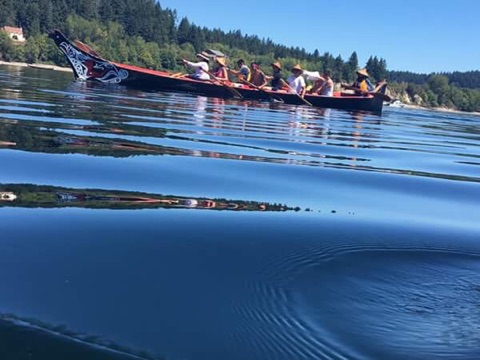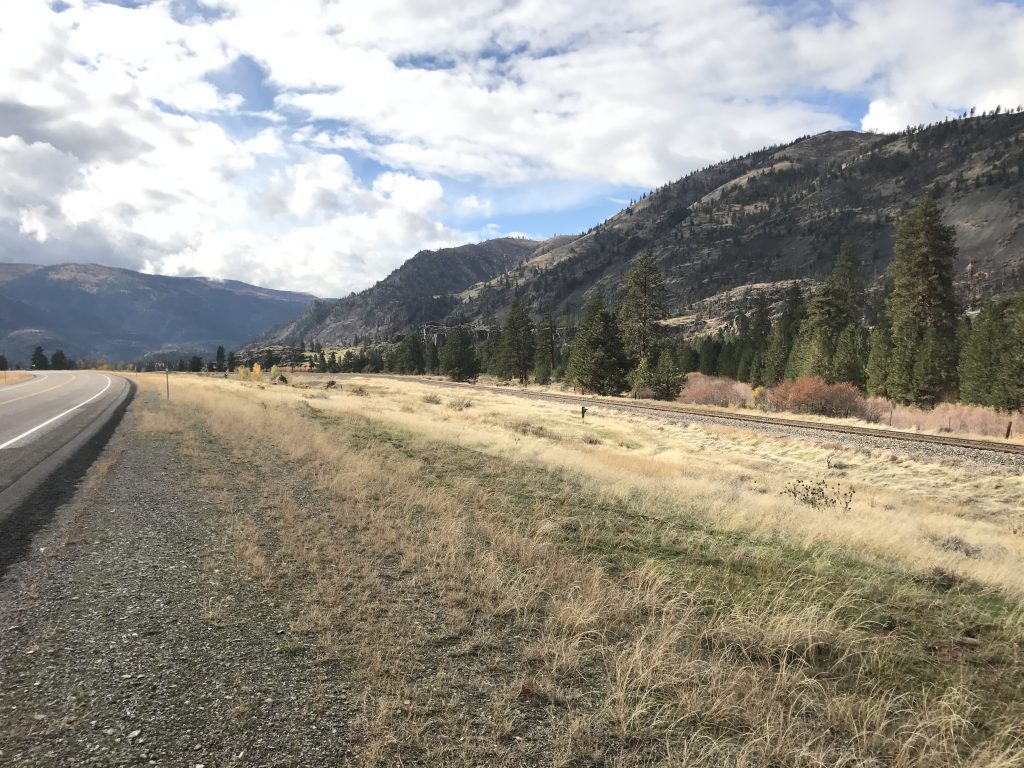Read about the processes NYEP students went through to create these wonderful digital stories!
About the Videos
Throughout the second year of the project, NYEP focused on the creation of Digital Stories by it’s students. We contracted with the Center of Digital Storytelling (CDS), a non-profit organization that assists youth in using digital media tools to develop meaningful stories of their lives. CDS encourages the use of stories in “ways that support positive individual and collective change.”
CDS assisted in two workshops. The first was held over five days during the week of the Seattle Public Schools winter break in February, 2011. The goal for the workshop was to engage up to 20 youth in developing a short first-person video-narrative that combine audio, images and their own voices in telling a personal story. Staff from CDS used UW computer resources to teach students how to construct a story and use technology to digitize it into a short video. The second workshop combined the resources of NYEP and CDS to develop a “Life” curriculum centered on nutrition and culturally appropriate ways to harvest prepare and share traditional foods. Staffs from CDS assisted students develop a second digital story based on the Life curriculum. This five day workshop was conducted over two Saturdays and on three week days. Students attending had to miss three days of school to complete the workshop.
NYEP’s objectives for the students participating in the workshops were:
- Develop their communications and technology skills through the development of digital stories
- Support their development of their own self-identities in ways that explored their heritage and cultures
- Explore nutrient values in native foods to develop a sense of better diet and understanding of nutrition science
- Extend their social networks
- Expand their educational and professional horizons
- Gain confidence and leadership capacity
The assumptions underlying this approach were that students exploring their cultural heritage would gain a stronger sense of Indian identity, which would affect their self-esteem and self-confidence. This will contribute to their academic goals and performance. The Life workshop also assumed that exposure to healthy native foods would enrich their understanding of the science of nutrition. By locating the program on the University of Washington campus, students would become comfortable seeing themselves in an higher education environment.
The workshops culminated in a community event at which traditional food was served, the digital stories from both workshops shared, and students discussed their experience and responded to questions. In addition to the community showcase, smaller groups of students shared their digital stories at special events. These included a presentation at Heritage College located on Yakama Nation lands, Northwest Indian College, and at the Northwest African American Museum.
Over the course of the two workshops twenty-seven videos were produced by twenty-five students. Fifteen were products of the DST workshop and twelve were produced during the Life project. They present very personal stories of the life experiences, their sense of self and their relationships with family members. The digital stories produced in the first workshop focused on students’ personal identities – either as persons of mixed race, as members of a specific tribe, or as persons coping with the challenges of growing up. The stories in the Life workshop centered on food, but these also explored relationships, identity and family.
Common Themes
A review of the twenty-five digital stories does reveal some similar themes, some quite specific and others overlapping. In the DST workshops the primary emphasis was on personal stories so most explore identity issues or descriptions of life’s challenges and opportunities. Themes that emerge across the stories include: having pride in ones ethnicity or ethnicities, having pride in family and heritage, making difficult choices to seek opportunities for a good education, facing personal challenges and learning important lessons. The stories could be organized in many different configurations since themes overlap. However, for this discussion, they have been summarized in the following categories.
Exploring Mixed Racial Identity
In the DST workshop, students of mixed African American and Indian heritage explored their heritages. Though seen by society as “Black” they explained their identity could not be so easily classified. Theirs was a tapestry of heritages and their stories share images of American Indian grandmothers or great-great grandmothers. They also revealed their European roots as well as their African American heritages. As one women explains, “Now that I know [I am] more than a proud African American –now see myself as a person of many parts… when I look in the mirror.” Another had resisted being seen as mixed race by African Americans, but as she explored her heritage, she grew to understand the reason others could see her mixed racial background. Another young woman explains learning more about her mixed heritage, although she is somewhat confused as her identity is still forming. She ends her story by poetically stating that, “Mist in the air, but not as much as before, we are beautiful.”
Moving for Opportunity
Another theme emerging from the DST stories was the decision to make a significant move to enhance personal and educational opportunity. For one young man, his motto was, “don’t be a statistic,” another number in the list of drop outs. When he needed support through some hard times, he sought help from a family other than his own. He chose to move more than 1000 miles away to live with an aunt and uncle. Although he deals with homesickness, he is striving for better grades, aspires to be on the honor role and eventually study engineering. A young woman moved from her mother’s family on the reservation to live with her father in Seattle. She describes the good and bad in making such a move – missing her home, the quiet of the reservation, but knowing the schools in Seattle are better, full of diversity and the move has, “opened my eyes and my mind.” Another story fits with theme of moving, but this one describes an urban Indian who has the opportunity to visit the reservation during summer to be with her grandparents. She observes that when, “I sit on the porch and watch the rez dogs play, I feel connected, like I belong.” She does not have this same feeling in her large urban high school; however she realizes that she enjoys much better educational opportunities living in the city. She titled her story, “Best of Both Worlds.”
Overcoming Challenges
Two DST stories focused overcoming challenges. One described not giving up – using the inspiration of a brother’s encouragement and his parents expectations that he do well — to motivate him to not give up when he grew discouraged in his efforts to master the skateboard. A second story poignantly describes a young woman’s ability to see past the racism inherent in a negative cartoon drawing of an Indian sent to her by an anonymous student in her school. Using poetry and stark images she states that “I never danced around a fire, but a fire danced around me.” She explains that ignorance was behind the cartoon, and her willingness to confront this type of racial stereotyping though positive advocacy for deeper understanding of diversity rather than promoting more ignorance and hatred.
Family Stories
Two other DST stories had messages related to family, one which described a family crisis, another the lessons learned from a beloved uncle. A mixed tribal/Hispanic student lived through a financial crisis that caused her family to be threatened with eviction. She concludes her story with the lesson that “familia are what you have and no matter what, you have to save what you have.” The other story is a recounting of an uncle who kept pennies, and would allow his nice to take a handful out of the penny jar and pick the five oldest ones for her own collection. Her uncle told her many stories. Now she still has the collection of pennies that he gave her, and although he has passed on, she takes out the pennies and remembers his stories and her good fortune to have had him in her life.
Most of the stories from the Life workshop focused on families and food. Some were specific such as: learning how to make fry bread from a parent or grandparent, cooking salmon, picking berries for a pudding and learning Lakota language for food, or brewing a plant based tea for an uncle with cancer. These videos are full of family pictures and videos showing people working together in a kitchen or eating and laughing together. Family centered Life stories with slightly different messages include one from a young woman who describes sharing a root feast with relatives where the ceremony “lifted up my spirit.” A couple of other Life stories illustrated learning from their grandmother and sitting with her and other family members to do beading.
Learning Hard Lessons
In one Life story, a young woman laments about having to help her mother make tortillas. Then she recalls how her grandmother and grandfather in Mexico collected corn, ground it and made tortillas. They shared stories while working. She relates that this corn is nutritious, not like the high fructose corn syrup in foods today. The recollection makes her realize that in making tortillas, she is keeping her traditions alive, so she should not think of doing this work as punishment. Another young man created a Life story explaining his joy in fishing with his father. However, now he realizes that when he did not accompany his father to put the fish back into the river, he failed to show proper respect to the carp. He titled his story, “The Great Apology.” A heavy lesson is learned by a young woman who attends the funeral of one of her young relatives who dies of diabetes. Using the image of an unfinished beaded barrette she explains the sadness of losing a friend too soon in life and resolves to no longer eat fast foods and unhealthy foods.
Pride in Indian Heritage
One of the students at the Life workshop told his personal story; he was a sickly child whose family could not care for him in a poor country in Central America. Consequently, they gave him up for adoption into a family that could provide the health care he needed. Today, although he loves his adopted family, he feels a hunger for his heritage. He explains that his love of tortillas feeds this hunger and reminds him of his pride in his heritage.
A few of the DST stories’ central focus was the students’ pride in their native heritage. One student described that at one time he viewed the responsibility to carry on his tribal cultural practices as a burden. However, now he realizes this responsibility is a “gift.” He explains that it is in being part of the whole, a culture and family, that he is stronger than by being alone. Another story centers on a young man’s connection to long hair as an expression of his cultural pride. He describes his frustration when he had to cut his hair, but now realizes that expressing his heritage and traditions is deeper than merely the length of his hair. Another student examines the frustration he feels when his family is treated disrespectfully because they do not speak good English. He uses pictures and music to illustrate the beauty of his parents and his Hispanic traditions. He concludes his story by explaining, “When I dance I feel the sounds of every instrument…. This is why I am proud of who I am and of my culture.”




